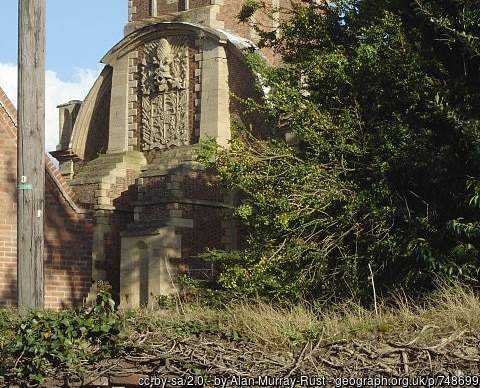The 600-odd paragraphs of the First-tier Tribunal (‘FTT’) decision in Whyte v HMRC [2021] UKFTT 0270 (TC) cover a number of points on ‘selling off the garden’. In this note we leave the more abstruse arguments for another day and will focus only on two of the more accessible ones.
Mrs Whyte bought Bunny Hall (the name has nothing to do with rabbits, as the FTT felt, bizarrely, bound to explain) and its estate in 2001. Bunny Hall was and is a Grade I listed building and Mrs Whyte intended to live there. But restoring it to a suitable condition was going to cost a great deal of money.
With a view to raising the money to pay for the restoration, Mrs Whyte obtained planning consent to build half a dozen houses in the grounds and sold off six separate building plots.
This was an ‘enabling development’: this is not a statutory term, but is described in the FTT judgement as ‘jargon that is now used to describe a financially beneficial development that is undesirable in planning terms, but for the fact that it will enable some other, more desirable, public benefit.’ In other words, Mrs Whyte was given consent to build houses in the grounds because the sales of the plots were going to provide the funds to renovate a Grade I listed building.
HMRC contended that the sale of plots was a transaction in the nature of trade: it had always been the intention of Mrs Whyte to sell off the plots at a profit (and the fact that she ‘had form’ did not help – her husband was a builder and she herself had been involved in previous property transactions).
The FTT found that, at the time at which the Estate had been bought, Mrs Whyte intended to live in the Hall and, although she intended to sell off parts of it, those parts had not been identified. It concluded that her ‘predominant intention’ at the time of acquisition was to hold the Estate as a capital asset: no (identifiable) part of it had been acquired as trading stock. And the FTT went further: if Mrs Whyte had merely obtained planning consent and sold off the bare plots subsequently identified for disposal there would have been no trade: the whole matter would have been dealt with under the Capital Gains Tax (‘CGT’) code.
But as it was, Mrs Whyte ‘went beyond this, and she had commenced developing the Plots herself, not just by clearing the site of trees and vegetation, draining and filling-in the pond, installing utilities, and constructing the access road, but also by starting construction work on the houses on the Plots, by digging foundations, and in the case of some of the plots, preparing the floor slab for concrete pouring, and laying bricks.’
There had thus been an appropriation of the plots to trading stock, and that appropriation had happened in May 2003 when the location of the plots destined for sale had been identified. There was therefore a deemed disposal of them at market value at that time for the purposes of CGT and all further profits were subject to Income Tax as trading profits.
The FTT then went on to consider whether the gain on the disposal of the plots (either in May 2003, if the ‘appropriation to trading stock’ analysis was right, or in December 2003, when the plots were sold) was exempt from tax under the CGT ‘main residence’ rules.
That in turn required the FTT to consider whether, at the relevant date (May or December):
- The plots (or any of them) were part of the ‘garden or grounds’ of the Hall at all and
- If they were, whether they (or any part of them) fell within the ‘permitted area’ of 0.5 hectares or such larger area as was ‘required for the reasonable enjoyment’ of the Hall.
The work that Mrs Whyte had done on the plots was against her on the first point: despite her Counsel’s valiant efforts to argue that the work done could all have been undone if necessary so that the plots were not at the time of disposal irredeemably lost to the garden, the FTT held that the plots had been ‘de-natured’ by the time of disposal such that they had already at that date ceased to be part of the garden or grounds.
As to the second point, the FTT observed (quoting from an earlier case) that land is ‘required’ only if ‘without it there would be such a substantial deprivation of amenities or convenience that a real injury will be done to the property owner.’ That normally gives rise to HMRC’s infamous but perfectly logical ‘Catch 22’ argument on the point – namely, that if an owner has a choice as to what part of the grounds to sell off, he or she is hardly likely, other things being equal, to select an option that inflicts on him or her a ‘real injury’. Ergo, exemption from CGT for sale of a part of the extended ‘permitted area’ will be rare.
However, that argument is, for whatever reason, conspicuously absent in Whyte: and the FTT concludes that if it is wrong about trading and wrong about de-naturing, then about half of the plots would (if part of the garden or grounds at all) be ‘required for the reasonable enjoyment’ of the Hall and would therefore benefit from CGT exemption.
For more information, please get in touch with your usual BKL contact or use our enquiry form.
